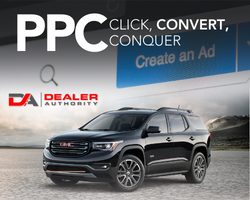Listen to Audio Version
Old School is New Again
While most of those who use the term “old school” in automotive retail are speaking disparagingly about dealerships, managers and salespeople relying on outdated marketing, sales techniques and processes; the truth is that the most successful dealers I work with today understand that sometimes “old school” is still the best way to move some metal.
In the current flat-to-down market, most dealers have no idea where to cut, where to spend, or where to focus their efforts. This, of course, is because most dealers just rode the wave for the past 6+ years, and only now are they faced with falling sales.
For these dealers, I recommend mixing in a little of what others consider “old school.” Here are four quick, old-school strategies I recommend you start with if you’re looking to gain share in a down market:
1. The Vintage Road-to-the-Sale
While I’ve argued for a shortened road-to-the-sale for some time, this doesn’t mean that you should fully abandon your old-school processes. It does, however, mean that you should (at the very least) start enforcing these.
A strictly-enforced old-school road-to-the-sale beats no road-to-the-sale any day of the week!
The biggest problem most dealers face with respect to their road-to-the-sale is not that it’s too long; it’s that it hasn’t been enforced since 2012. So, dust off that 11-step primitive blueprint and star enforcing it. Once your team is following it properly, you can begin to shorten or remove steps as you track and measure.
What you’ll find, I am certain, is that most everyone who walks on your lot today has already done their own Needs Analysis, Product Selection and Feature Presentation; and now they just want someone to sell them a car.
By tracking and measuring (and holding your team accountable to following the steps) your strictly-enforced road-to-the-sale will evolve very quickly into something that your customers love and that helps you double your demo and write-up percentages (which, of course, will double your closing percentages).
2. The Antiquated Phone
Every salesperson and BDC agent I encounter today wants to talk about texting, texting, and texting (in that order). No one, it seems, wants to go near that antiquated communication device you’ve got plopped on everyone’s desk.
They are afraid of the phones!
Beyond this obvious reason your people hate calling customers and prospects, they’ve also developed a bad taste in their collective mouths for the off-putting word tracks, phone scripts and phone-up cards you’re making them use.
While much of what we want our salespeople to say on the phones worked great when the caller had no idea what they wanted (again, the road-to-the-sale stuff like Needs Analysis, but also the phony rapport building), using these outdated scripts and tactics today is causing your current phone processes to fall flat.
Get your team back on the old-school phones, but have them drop the ineffective old-school word tracks and start treating every inbound call like it’s an order – and expecting to set an appointment that shows with every call. Once they approach the phones with shortened scripts and clearer goals, you’ll be amazed at how quickly they’ll start to drive their own Up Bus with those decrepit old phones.
3. Crusty Old Sales Leads
Sales leads, contrary to the reports you’re hearing from ineffective digital marketers, are not dead. In fact, top dealers continue to grow not only their lead counts, but also their sales from these crusty old sales leads.
Using everything from instant retargeting (sometimes compared to old-school pop-ups and pop-unders) to the much-maligned Third Party Leads, dealers who are gaining share are doing so by casting a wide net and staying focused on their primary digital marketing goal. That is: to ultimately drive a sale.
By the way, if you’re not successful with these types of sales leads, it is a “you problem.” Most dealers/salespeople who struggle to sell at acceptable levels with these methods suffer from built-in biases that prevent them from taking full advantage of the opportunities available. Biases like:
- “We don’t do pop-ups!” The same General Manager that has no problem with putting an inflatable wavy arm guy on his front line suddenly believes that his store is too good to use a pop-up or pop-under on the website. Too bad, because dealers properly employing instant retargeting are generating 30%-50% more sales leads from their existing traffic.
- “We don’t need 3rd party leads – we can generate these ourselves!” Your competitors love when you say things like this! Newsflash: Not every in-market customer comes to your website; and third-party leads are how top dealers ensure they are capturing the maximum number of opportunities at the lowest overall cost per lead.
Do yourself a favor and put away your biases and remember your goals. Doing so will guarantee you’re selling more than your share of the in-market prospects looking to buy!
4. Boring ROI Measurements
With all the talk about attribution, you’d think there was no room left for boring, old (yet real) ROI measurements like cost-per-lead, cost-per-sale and cost-as-a-percent-of-gross. Be careful; when you abandon real ROI measurements like these in favor of something your vendor is pushing, you can no longer take an unbiased look at the effectiveness of your advertising spend.
Attribution, so far, seems like a decent measurement for understanding the customer journey and potentially increasing your budget where the customers are researching their next purchase; but real ROI measurements are where the proverbial rubber meets the road.
These boring old ROI measurements allow you to hold digital marketers accountable to what’s important to you (selling cars) in an unbiased way so that you can adjust budgets accordingly.
…
Don’t get me wrong; I’m not advocating for you to avoid evolving your methods and marketing to fit today’s consumers – that would be foolish. But, I am asking that you reexamine your current pursuits for shiny objects and ensure these still align with your dealership’s goals.
Moreover, I’m encouraging you to get back to some basics that you know work – but, that you’ve likely abandoned sometime over the past six years. I think you’ll be pretty impressed with your ability to drive some sales (and grow some share) the old fashioned way.
Good selling!









Current Discussion Topics